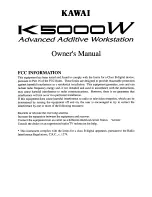
Embedded Solutions
Page 24 of 46
PLL SDAT Output: This is where the PLL data state is specified when data is being
written to the PLL. When the PLL is driving the data line this bit must be set to a ‘1’.
The PMC-XM has a PLL device which is programmed over an I
2
C bus to produce the
desired frequencies.
The data line has a pull-up on the board. When the PLL is enabled and the I
2
C data bit
is set to ‘0’ in this register, the external line is driven low. When not enabled or when
the I
2
C data bit is set to ‘1’ in this register, the external line is tri-stated and pulled-up by
the resistor. For a read operation the data should be set to ‘1’ to allow the PLL to drive
the data line.
The clock line for the PLL to be programmed is toggled along with the data to create a
bit stream with a “software clock”. Set the bit to the next state and toggle the clock line
and repeat.
The upper selection bit can be set in the register and directly driven to the PLL. This
allows the selection of alternative pre-programmed clock frequencies.
To read over the I
2
C bus a command is first written and then the bus read for the
response. The I
2
C data input bit in the status register contains the state of the bus
when read. The software will toggle the clock line and when the low-to-high transition is
made, read the data bit then repeat until the entire message is captured.
The engineering kit contains the logic and software required to program the PLL and to
read-back the internal register programming. The software to determine the frequency
command words is available from Cypress Semiconductor. The PLL part number is
CY22393FC. Cypress has a utility available for calculating the frequency command
words for the PLL.
http://www.dyneng.com/CyberClocks.zip
is the URL for the Cypress
software used to calculate the PLL programming words. The reference frequency is 40
MHz.
















































